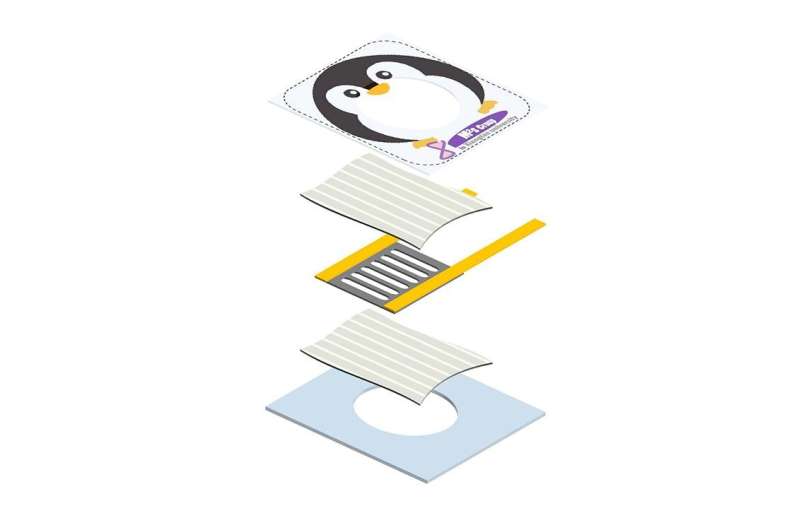Superhydrophobic biosensor could measure sweat vapors on the body

Sweat contains biomarkers that help doctors make health diagnoses. Wearable sensors can be used to monitor a person's perspiration rate and provide information about the skin, nervous system activity and underlying health conditions. But not all sweat is created equal, and some cannot be measured with current sensors. A newly developed superhydrophobic biosensor could be used as a diagnostic tool to detect such types of sweat.
The sensor, developed by Huanyu "Larry" Cheng, James L. Henderson, Jr. Memorial Associate Professor of Engineering Science and Mechanics, was featured in a paper published in ACS Nano.
Sensible, or liquid, perspiration is sweat that can be perceived by a person, such as during intensive exercise. Wearable sensors can provide continuous, non-invasive tracking of this type of sweat. Insensible, or vapor, perspiration is different. It is the loss of only water from the skin, secreted at a much smaller rate during low-intensity exercise or rest, and measuring it is difficult, according to Cheng.
"Monitoring insensible sweat is of high interest for evaluating skin health and disease conditions, such as eczema and wound healing, as well as underlying health statuses, such as pain or anxiety," Cheng said. "Skin-interfaced devices that detect sweat rate and loss are currently limited to working with sensible sweat and are not suitable for insensible sweat in a vapor state."

Cheng developed a prototype of a superhydrophobic sweat sensor to measure vapor from insensible perspiration. The material—a superabsorbent hydrogel composite on a porous substrate sandwiched between two superhydrophobic textile layers—allows the permeation of sweat vapor while preventing the sensor from being affected by the external water droplets of sensible perspiration. The sensor could be integrated with a flexible wireless communication and powering module that continuously monitors sweat rates at different body locations.
"Proof-of-concept demonstrations on human subjects showcased the feasibility to continuously evaluate the body's thermoregulation and skin barrier functions," Cheng said. "This enables the assessment of thermal comfort, disease conditions and nervous system activity and provides a low-cost device platform to detect other health-relevant biomarkers in the sweat vapor as the next-generation sweat sensor for smart health care and personalized medicine."
More information: Yangchengyi Liu et al, Skin-Interfaced Superhydrophobic Insensible Sweat Sensors for Evaluating Body Thermoregulation and Skin Barrier Functions, ACS Nano (2023).
Journal information: ACS Nano
Provided by Pennsylvania State University
















